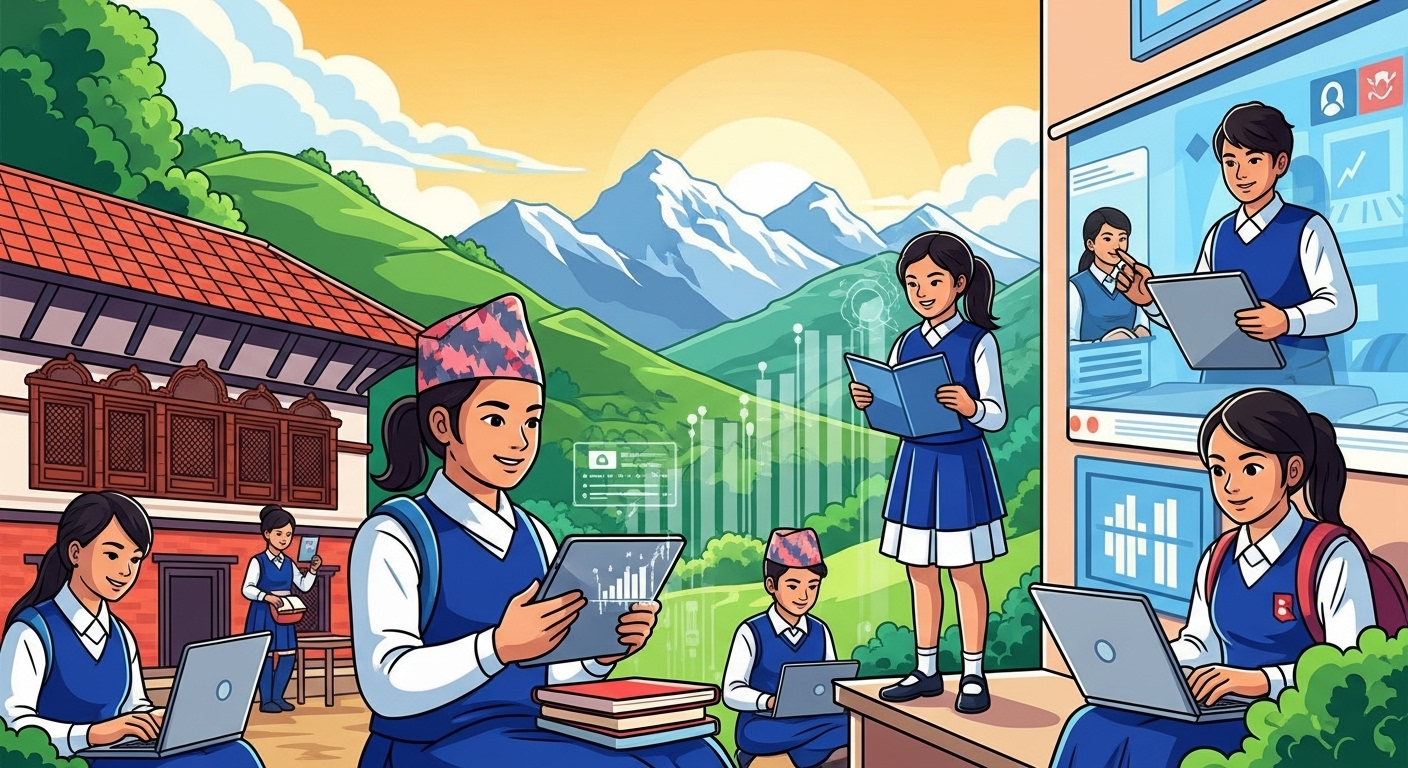EdTech Nepal: Digital Marketing Strategy & Market Analysis
Industry Analysis: The State of EdTech in Nepal
A Nascent Market Poised for Transformation
Nepal’s education technology (EdTech) sector is at a critical inflection point, undergoing a dynamic transformation from a niche concept into an essential component of the national educational framework. This evolution is propelled by a powerful confluence of factors: a significant surge in digital adoption across the country and a growing, widespread recognition of the need to transcend the limitations of traditional, infrastructure-bound education. The narrative of this shift is underpinned by compelling data; internet penetration, a foundational prerequisite for any digital industry, has expanded dramatically from a mere 0.9% in 2005 to an impressive 65.9% by 2021.
This digital revolution has laid a crucial foundation for innovation, creating a fertile ecosystem where technology-driven solutions can take root and flourish. The broader information technology (IT) sector in Nepal demonstrates this maturation, exhibiting a robust 15% annual growth rate over the past decade and contributing significantly to the national economy. Within this thriving tech landscape, EdTech is emerging as a vital vertical. The market is already showing signs of segmentation, with a diverse array of players catering to different needs. This ranges from organizations like EduTech Nepal, which focuses on foundational digital literacy and infrastructure, to comprehensive online learning platforms such as MeroSiksha, and specialized, niche providers like Karkhana, which concentrates on hands-on STEAM learning. This diversity signals a market that is not only growing but also maturing, with companies beginning to carve out specific value propositions to address the multifaceted challenges within Nepal’s education system.

Market Trajectory: Sizing the Opportunity Amidst Global Trends
While precise, localized market size data for Nepal’s EdTech sector remains nascent, the explosive growth of the global EdTech market provides a powerful and instructive proxy for the nation’s potential trajectory. The key for any startup is to contextualize this global momentum within Nepal’s unique socio-economic landscape and digital adoption curve. Globally, the EdTech industry is on a steep upward trend. One market analysis projects growth from USD 192.90 billion in 2025 to an astounding USD 705.75 billion by 2034, reflecting a compound annual growth rate (CAGR) of 15.50%. Another forecast estimates the market will expand from USD 163.49 billion in 2024 to USD 348.41 billion by 2030, at a CAGR of 13.30%. These figures illustrate a massive influx of global investment and surging demand for digital learning solutions, a wave that Nepal is well-positioned to ride.
Significantly, the K-12 (kindergarten through 12th grade) segment is the dominant force in the global market, commanding the largest revenue share at 39.40%. This global trend aligns perfectly with the strategic focus of prominent Nepali players like MeroSiksha and Karkhana, suggesting that the K-12 demographic represents the primary and most lucrative market segment for new entrants to target.
However, simply viewing Nepal’s market as a small fraction of the global total would be a strategic miscalculation. The rapid proliferation of internet access presents a profound opportunity for Nepal to bypass the traditional, capital-intensive stages of educational development. Instead of relying solely on the arduous and costly process of building extensive physical school infrastructure across challenging terrains, digital platforms offer a mechanism to scale access to quality education much more rapidly and cost-effectively. This signifies a paradigm shift towards a hybrid educational model where digital tools are not merely supplementary but play a central, transformative role. Consequently, the growth potential of EdTech in Nepal is disproportionately high. The total addressable market should not be measured by its capacity to replace existing educational spending, but by its ability to capture the immense value of newly enabled access to education for hundreds of thousands of children, particularly in remote and underserved areas.
📚 For more insights, check out our ultimate digital marketing resource.
The Ecosystem of Players: From Infrastructure to Instruction
- EduTech Nepal: This organization tackles the most fundamental barrier to digital education: the lack of access to hardware and basic digital literacy. By focusing on establishing computer lab networks in schools across 31 districts, particularly in rural areas, EduTech Nepal is building the foundational infrastructure upon which the rest of the EdTech sector can grow. Their work, which has already reached over 267,000 students, addresses the reality that many public schools operate with outdated hardware and inconsistent internet, making advanced online content inaccessible.
- MeroSiksha: Positioned as a mass-market online learning platform, MeroSiksha aims to be a


